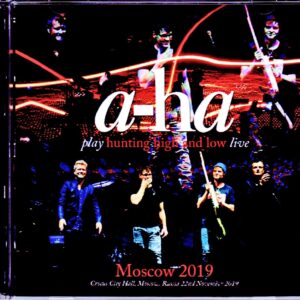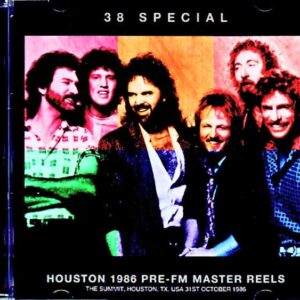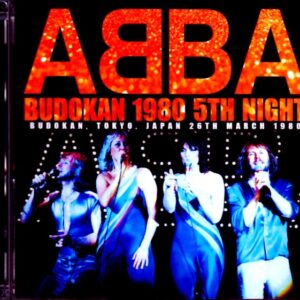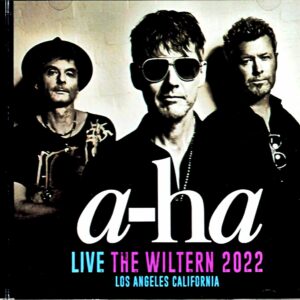Description
…Yes, it was a recording that was supposed to have been settled and was already considered a thing of the past. However, the master tape provided by the recorder himself contained many unknown and newly discovered scenes, and it was an amazing special-class sound that overturned the evaluation and label that had been degraded to the lowest level…. A shock wave will run through the history of Pink Floyd’s recordings at the beginning of the new year, and such an incredible recording will be released! Pink Floyd’s second performance in Japan in March 1972. They appeared with the initial concept of “THE DARK SIDE OF THE MOON”, and performed a total of six performances at this time, all of which have unofficial recordings. There are many special titles for each performance, but this time, a big movement that cannot be ignored occurred in the recording of the second day of the Tokyo performance on March 7th. Speaking of the title that recorded the pattern of this day, “TOKYO 1972 2ND NIGHT” released by our label in 2016 is still fresh in our memory. This Recorder 2 is the first complete recording of the March 7th performance, which was previously known as the only source of the March 7th performance, that is, the overseas ZEUS label’s “LIVE IN TOKYO 1972”. Moreover, since the entire show was recorded with a special sound quality that is as different as heaven and earth from Recorder 1, it became the definitive recording of the March 7th recording that everyone who heard the sound would nod in agreement. With the appearance of this definitive title, the ZEUS version has naturally become a relic of the past, but now we get to the main topic. However, at the end of 2017, a tape was brought in by the recorder himself. It was the original master tape of Recorder 1 used for “LIVE IN TOKYO 1972 (hereinafter referred to as the “ZEUS version”)”, which we have been familiar with for many years and which is now ignored. However, no matter how original it may be, if you have ever listened to the ZEUS version, you will remember the sound lacking bass, the treble range being adjusted, and the horrible sound image in which the sound pressure of the right channel dropped and the localization became extremely left-leaning from Disc 2. However, the situation suddenly changed the moment it was played, and one of the staff members involuntarily blurted out, “What is this…?” The sharp transparency, the awe-inspiring denseness of the sound, and the performance sound that jumps out straight and three-dimensionally from the localization that does not shake even a little… The content of the voices heard around the recorder, the position of the missing musical sounds, the state of tuning, and the position and content of the MC are certainly the source that we had become accustomed to as the sound source of March 7… but the sound was completely different as mentioned above, and all the staff could not help but be confused by this. Not only that, but the original Recorder 1 included the song “Sun Hymn,” which was cut off in the middle of the song on the ZEUS version and ended up being released for the first time in the world on the later Recorder 2 version, in almost its entirety! We don’t know how the ZEUS version was produced in 1999. However, as a recorder, I didn’t provide the sound source for the ZEUS version, but rather, the tape I released in a tape trade was dubbed over and over again, and the ZEUS version was made by equalizing the extremely old and deteriorated tape to make it look good. However, it is also an interesting topic that this original sound contains many scenes that are unique to the original recording that are not on the ZEUS version (= cut and edited). For example, in “Speak to Me,” there is a scene where the record button is paused at 0 minutes 00 seconds – 03 seconds, but this part is not included on the ZEUS version because it is recorded from the scene after the pause. Also, the “Breath of Life” that follows this is not faded in like the ZEUS version and starts straight, so the original sound is unprocessed and first appears right after the start of the disc. And of course, the difference is also clearly visible in the sound quality. The first thing that stands out is “Running Around”, which not only has a tougher and more solid sound image than the ZEUS version, but also the guitar cutting and bass movement are vivid and dense, and you can see that the listening experience of the song alone has improved significantly. The quality and brilliance of the tone emitted by “Scat in the Void” is also completely different, and you will be amazed at the diffusion and fullness of the sound that is unique to the master sound. The scene in the middle where the organ resurfaces from the point where each monologue SE is exposed is the best example of this, and it is surprising that the vividness of the reverberation unique to the deformed roof is captured with more realism than Recorder 2. You will be able to enjoy the completely different sound density of “Money”. The clarity and dynamism of the guitar’s talkative and diverse improvised melodies in the massive repetitive rhythm are off the charts. In “The Color of Hope,” the guitar pops out with a much more vivid sound, making it easier to grasp the contrast and composition with the modest performance in the background. The MC by the popular DJ at the time, who entered after the end of “Crazy Eclipse,” has an overwhelming improvement in the clarity and prominence of the voice emitted with that characteristic intonation, and you will realize that the importance of the historical facts and the sound source is increasing. As you know, on the ZEUS version, the sound pressure in the right channel dropped throughout the second half of the show, making the positioning significantly unbalanced. However, there is no such problem with this original sound, and it proceeds with the sharp sound of Recorder 1. If you have listened to the ZEUS version, you will find it hard to believe that the second half of the show can be heard without any problems with positioning, but you should also not miss the fact that the sound starts about 7 seconds earlier than the ZEUS version at the beginning of this disc 2. On the ZEUS version, the beginning of the recording for about 7 seconds is cut off and faded in, whereas this work appears in its original form without any fade processing. And even more than that, the sound quality expands the advantage here. Unlike the ZEUS version, this original sound is surprisingly direct, and it attacks us with more power than Disc 1, and it is irresistible because it approaches us. Among them, the interesting thing is the tuning scene that appears after the end of “Blow Wind, Call Storm” for about 5 minutes and 30 seconds. The anecdote about Floyd’s tuning scene at that time is still talked about today is that “many people thought that the long tuning was a new song,” but this part, which can be heard with the original sound image of Recorder 1, is revived as a scene where you can experience it in real life. The sound of each instrument is sharp, sometimes mellow, and sometimes it flies in, diffuses, and disappears somewhere. This sound image is truly unique to the master sound, and it is an outstanding scene that clearly shows that many people at the time had such a misunderstanding. “Eugene, Beware the Axe” has a mysterious floating feeling before the scream and a change in energy after the scream, which has a certain density and weight, and you will feel an urge to be driven from deep inside your soul. After the end of the song, the tuning goes back into place, but it is also noteworthy that the adjustment of the sound of each instrument can be heard with a more direct sound than the Sigma 161 version, that is, Recorder 2. After the end of “Echoes”, which has a remarkable improvement in the mid-range, the diffusion of the faint tone of the guitar phrase and the beauty of the soaking sound stand out, the MC by the popular DJ of the time comes again (※ This part is not included in Recorder 2. It is a scene unique to the ZEUS version = Recorder 1). After this MC, there is a momentary strange sound that seems to have occurred during the pause, but in fact this was also cut from the ZEUS version, and this section of about 2.5 seconds appears this time with the original vividness intact. And “Sun Hymn” is the first complete recording in the history of Recorder 1. The ZEUS version fades out in the middle of the song (※ This work does not include the track time after 5 minutes 25 seconds), and the disc ends with a bad aftertaste, but in this work, the scene after that first appears for about 6 minutes until 12 minutes 05 seconds after the end of the song, and you can listen to it perfectly until the end of the performance. The only time sound is lost for about 30 seconds from 5 minutes 39 seconds to 6 minutes 10 seconds (※ Probably due to a tape change), and this is partially compensated for from Recorder 2 “TOKYO 1972 2ND NIGHT” and the connection is as follows. (1) 5:25 – 5:39 Recorder 1 master tape (2) 5:39 – 6:10 Recorder 2 (TOKYO 1972 2ND NIGHT (Sigma 161)) (3) 6:10 – 12:05 Recorder 1 master tape (up to the cheers after the final song) (4) 12:05 – 12:31 Recorder 2 (continuation of the cheers after the final song. The cheers from the same venue on the same day, but in a different location, from 12:05 onwards in TOKYO 1972 2ND NIGHT (Sigma 161) are supplemented until the end of the disc.) In other words, the ZEUS version does not include (1) and (3), and since this is a master tape, it naturally includes (1) and (3), so this approximately 6 minutes plus will be the first appearance of these parts. When written out as text information, it looks patchy and difficult to listen to, but as you know, Recorder 2 is also a very excellent high-quality source. Moreover, the source change part is connected at a waveform level of 1/1000 and carefully treated in milliseconds, so there is almost no sense of incongruity in the ear, and a smooth connection and finish that maximizes the excitement of the first appearance part is realized. Finally, although it is a little late to say this, from the perspective of sound source history, March 7, 1972 was a performance date like an air pocket of the 1972 Japan tour, where only Recorder 1 existed until Recorder 2 appeared in 2016. Although it can’t be helped because that was the only thing there was, we have evaluated this recording based on the sound and overall image of the “old Recorder 1”, which is quite different from the original sound. However, with the emergence of the true Recorder 1 overall picture from the original cassette master, this March 7th should make us realize the good fortune of having two of the best recordings of the entire 1972 performances. This will of course be a decisive means of deepening our understanding of this performance from a different perspective, and will lead to a significant reinforcement and enhancement of the historical facts and considerations of the 1972 Japanese performance shared by us Japanese fans. Please check out this responsive expansion of knowledge this weekend. This is a monster title that will raise the listening evaluation of Recorder 1 and the understanding of March 7th to an unbelievably high position!! ★ZEUS “LIVE IN TOKYO 1972” master sound source. The sound quality is much better this time★The ZEUS version does not include the part from Disc 2 7trk 5:39 onwards on this version. ●Comparison with the ZEUS version 1.Comparing the sound, this version has a natural, thick sound, while the ZEUS version has a thin bass, adjusted treble, and no higher treble, so it feels like a tape that has been dropped in the gen and has been equalized to give it a nice look. This version is at a higher level and is overwhelmingly better in quality and sound. 2.This version includes the paused section from Disc 1 1trk 0:00 to 0:03.The start of the main story after that is also recorded straight without fading in, so it is clearer than the ZEUS version which has been faded in. 3.The ZEUS version has a deep fade-in at the beginning of Disc 2, making it difficult to understand what is going on. This is probably because the whistling sound has become peaky due to the equalization. NowThe first disc is recorded straight without fading in. 4. The sound pressure level of the right channel of the ZEUS disc is lower throughout Disc 2, so the positioning is significantly unbalanced. The sound quality is also significantly worse than this disc, as well as ZEUS Disc 1. 5. The 2.5 seconds from 5trk0:08 onwards on Disc 2 of this disc have been deleted. There is certainly a momentary strange sound, but since it is a part where the cheers are connected, it seems that it would be better to record it. 6. The ZEUS disc does not include our disc 2 Disc 2 7TRK 5:25 onwards. The 7TRK of Disc 2 of this disc is as follows: (1) 5:25 – 5:39 This tape (2) 5:39 – 6:10 Another sound source tape (3) 6:10 – 12:05 This tape ZEUS disc uses the same source, but (1) and (3) are not included. Our disc is a master tape, so of course (1) and (3) are included, and this part is the first appearance of this source. Live at Tokyo Taiikukan, Tokyo, Japan 7th March 1972 PERFECT SOUND(from Original Masters) Disc 1 (49:02) The Dark Side Of The Moon 1. Speak To Me 2. Breathe 3. On The Run 4. Time 5. Breathe(Reprise) 6. The Great Gig In The Sky 7. Money 8. Us And Them 9. Any Colour You Like 10. Brain Damage 11. Eclipse 12. Goro Itoi MC Disc 2 (67:08) 1. One Of These Days 2. Tuning / MC 3. Careful With That Axe, Eugene 4. Echoes 5. Goro Itoi MC 6. Tuning 7. Set The Controls For The Heart Of The Sun ★5:39 – 6:10 / 12:05 – Compensation for the previously released “Tokyo 1972 2nd Night” until the end






Reviews
There are no reviews yet.